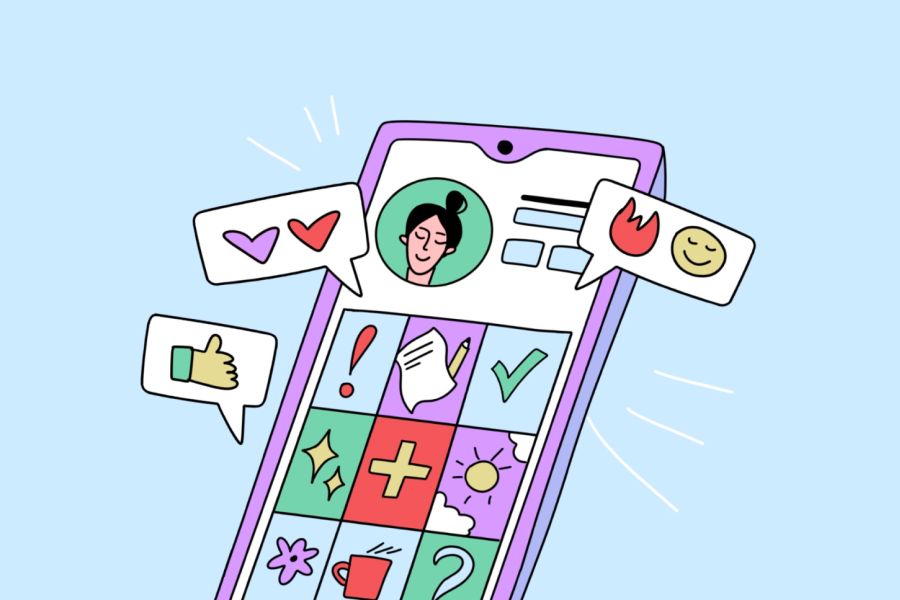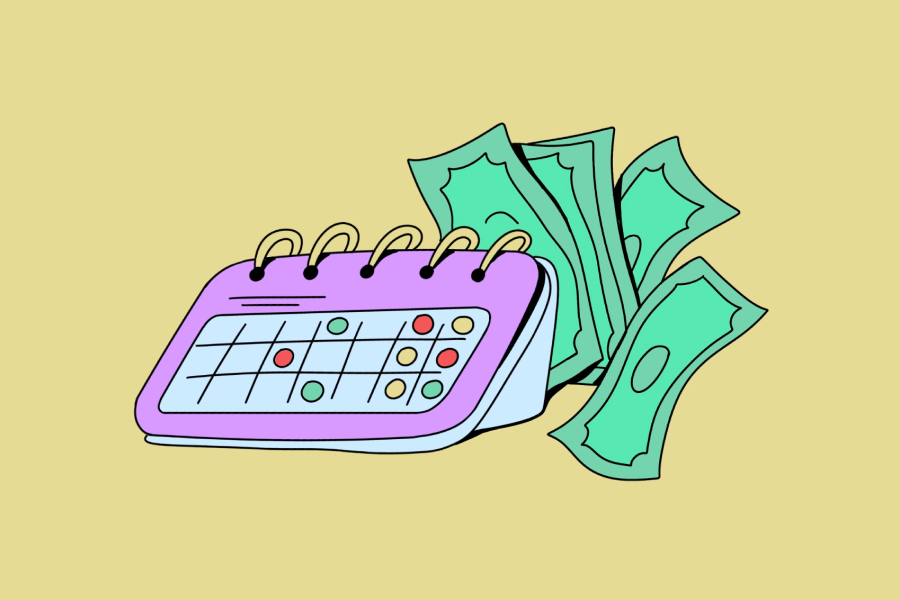How Much Should I Charge for a Logo Design as a Freelancer? All You Need to Know
Not sure what to charge for a logo design? This guide will help you set fair prices and know your worth.
February 5, 2025
February 5, 2025

Pricing your work is not easy. What if you sell yourself short or quote way above the market and scare all the prospects?
In this short but informative guide, we’ll discover the average logo design pricing according to different sources, discuss different pricing models, and give you tips on how to use them effectively.
The average logo design pricing
Oftentimes, the easiest way to calculate a price quote for logo design or anything you do as a freelancer is to check out the market statistics.
Here’s what we have so far:
- $55–125/hour on Fiverr
- $15–30/hour on Upwork — note that Upwork beginners often underbid, so the averages are actually way below the market.
- $250–3,000 for the full project according to a relatively recent self-report on Reddit
- Around $150 for the full project on DesignCrowd, the design contest platform
- $299–1,299 for the full project on 99designs, another design contest platform on the list
The takeaway is that the safest option for a beginner seems to be around $200 for a logo package. But what if you gained some experience and feel like raising your paychecks? In this case, it’s more reasonable to stop looking at the stats and start calculating project prices yourself.
Logo design pricing models
There are several ways to calculate the logo design pricing. Let’s explore each of them, how they work, and how they can benefit you as a freelancer.
Hourly rate
The hourly pricing model is a staple for freelancers of all niches, especially beginners. Here’s how to apply the model to logo design:
- Estimate the time. Break the large “design a logo” task into smaller stages from briefing the client to final revisions and estimate the hours for each stage separately.
- Figure out the rate. If you’re a beginner in design and you struggle to figure out the hourly rate, check out resources with salary stats like Glassdoor. According to the latter, the average hourly rate is $22–36/hour. New to freelancing but not the niche? Calculate it based on the salary you used to have at your last full-time job. Also, checking out Reddit discussions can help.
- Multiply hours by rate, and that’s it.
Main brownie point: The hourly model, even if you do the estimation in advance, is relatively flexible — so, in case of more revisions or extra research going on, you won’t end up working longer hours for less money.
Main disadvantage: You have no incentive to work faster, and it’s harder for a client to do the budgeting — the hours are only loosely planned.

Tip: For a fairer fee, you can use different hourly rates for different stages depending on the work complexity — for example, charge more for drawing the first version from scratch and less for revisions since the latter is an easier task.
Fixed rate
This one is straightforward: you and your client decide on the fixed logo price, you design, get money, and that’s it. If the project is long-term and time-consuming but is still not a full-time job, you can even split the rate into two payments, with the first one effectively working as a retainer fee. Here’s what you can include in your logo design fixed rate:
- Hours — not those calculated with a time tracker but loosely estimated. It’s reasonable to ask more for a more time-consuming job, right?
- Scope — both the volume and the project’s complexity.
- Your experience — think of it as a return on investment of time and money into your education and poorly paid beginner-level design gigs just to get a portfolio.
- Urgency — if it’s an urgent order that will require overtime and working during weird hours, feel free to charge more for your routine’s disruption.
Some folks even include a fixed number of revisions in their final logo design for a fixed price, which saves them from redrawing the logos several times for free.
Main brownie point: It’s very predictable, which makes budgeting easier for you and your client.
Main disadvantage: This model is vulnerable to scope creep, and you may have a hard time convincing the client that you’re not asking for too much money — meanwhile, the client would ask questions like “What will I be actually paying for?”.

Tip: If you want to calculate fixed rates quicker and more easily, create a price quote in advance. It should look like a restaurant menu and include all the little things you can do like “Drawing a logo from scratch”, “Improving the current logo”, “Creating a brand personality”, and whatever else you’d like to offer to your clients.
Value-based pricing
The value-based pricing model is, in its baseline, a fixed payment — but the difference is in calculation. Regular fixed rates come from you — they depend on how hard the job is, how many hours you’ll spend, and how experienced as a specialist you are. Value-based fixed rates come from the client — they depend on the perceived value and the impact the project will have on the client’s business.
The easiest way to calculate the value-based logo design price is to use the percentage of the projected profit over a certain time. Let’s say, the client expects to earn $100k over the next year due to a rebranding. Many sources cite 10–25% as the percentage often used for value-based pricing. In this case, you’re getting $10–25k for the project.
Main brownie point: Unlike hourly rates, this pricing model has an incentive to work well and deliver amazing results. Also, you can earn a lot for one project.
Main disadvantage: Value-based pricing is not suitable for beginners. It’s also not easy to calculate since oftentimes it’s based on the prognosis. And it requires from you some solid negotiation skills.

Tip: While negotiating value-based pricing with your client, start with the expected metrics. What do they want to achieve with the logo design? Directly affect the conversion rate? Increase awareness and visibility? Increase company merch sales? Then, translate these metrics into specific sums of money — with stuff like brand awareness, it’s not going to be easy, but it’s not impossible either.
Should I ask for royalties for logo design?
The short answer is no, it’s not appropriate. And, if you’re curious about the reason, here’s a long answer, which is a short retelling of this StackExchange thread.
The problem is, any graphic design project you’ve done is intellectual property, from the legal perspective. And, when the client pays you for a logo they’ll use everywhere from the website to mugs and T-shirts, they’re also paying you for the IP rights. So, once they paid you for the logo, it’s not yours anymore — it’s the company’s trademark that only the said company can use for print-on-demand items and other purposes.
Compare it to song royalties. Let’s say, an artist puts their song on a streaming platform. They get a small fee for every time someone clicks the play button — because the song is still theirs. It’s not purchased by the said streaming platform, and the credits describing who wrote and recorded the music piece are still in place. This is not the case for the logo design.

Here’s what to do instead if you want more reward for the impact:
- Ask for higher fees. Check out the paragraph about value-based pricing. If you’re experienced and not just drawing an icon but doing an entire branding package with merch mock-ups and God knows what, you can ask for a lot.
- Ask for equity. Sometimes small startups offer brand designers a share of the company. The percentage is not big usually, however, it can pay off decently if the business grows substantially.
Wrapping up
That’s a wrap — now you know the basics of pricing your logo design projects. Here’s a little rundown so you don’t forget everything the second you close the tab:
- According to averages on freelance platforms and social media self-reports, the sweet logo design pricing spot for a beginner lies around $200 for a logo package.
- The simplest logo design pricing model is hourly rates — it’s beginner-friendly, and it includes possible scope creep due to revisions.
- The fixed-rate logo design pricing model is more reasonable — it takes not just time but your experience, complexity, or even urgency into account. However, fixed rates are vulnerable to scope creep.
- The value-based logo design pricing model is based on the client’s perceived value of the project for the business — you can earn a fortune with this model if you’re experienced in design, analytics, and negotiations.
- Asking for royalties for logo design is inappropriate because the client pays you for the IP rights too — if you’re afraid of selling yourself short, ask a higher fee in the beginning or ask for equity.
FAQ
We are here to ease your working routine
Whether you're freelancing or a full-time contractor, we simplify the working process, putting you in control.
Try it free

Get tips and advice on how to build a strategy for your solopreneur social media.

Freelancers often pay upfront. Learn the expense reimbursement process, what’s reimbursable, and how to avoid disputes.

A simple guide to upfront payments: what they are, when to use them, how to explain them to clients, and what to do if they push back.

